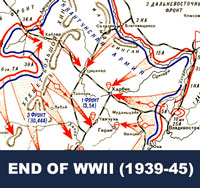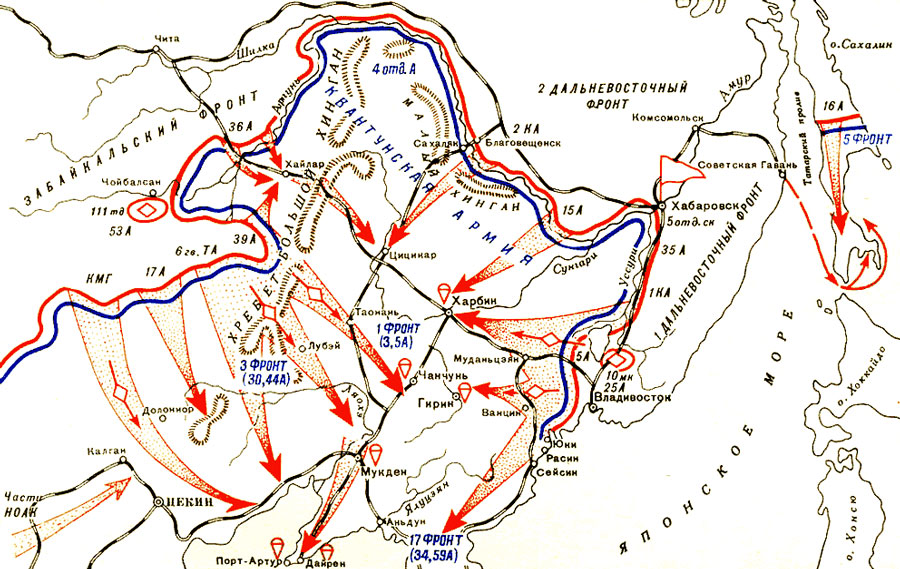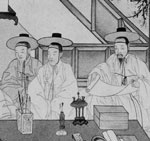Taekwondo 태권도Taekwondo Preschool
Joseon was a Korean state founded by Taejo Yi Seong-gye that lasted for approximately five centuries, from July 1392 to October 1897. It was founded following the aftermath of the overthrow of the Goryeo Dynasty in what is today the city of Kaesong. Early on, Korea was retitled and the capital was relocated to modern-day Seoul. View Joseon Era 조선 »

Korea Division: End of World War II (1939–45)
The division of Korea into South Korea and North Korea was the result of the 1945 Allied victory in World War II, ending the Empire of Japan's 35-year colonial rule of Korea by General Order No. 1.
In November 1943, Franklin Roosevelt, Winston Churchill and Chiang Kai-shek met at the Cairo Conference to discuss what should happen to Japan's colonies, and agreed that Japan should lose all the territories it had conquered by force. In the declaration after this conference, Korea was mentioned for the first time. The three powers declared that they were, "mindful of the enslavement of the people of Korea, ... determined that in due course Korea shall become free and independent”.
For Korean nationalists who wanted immediate independence, the phrase "in due course" was cause for dismay. In any case, discussion of Korea among the Allies would not resume until Germany was defeated.
With the war's end in sight in August 1945, there was still no consensus on Korea's fate among Allied leaders. Many Koreans on the peninsula had made their own plans for the future of Korea, and few of these plans included the re-occupation of Korea by foreign forces. Following the atomic bombing of Hiroshima on August 6, 1945, Soviet soldiers invaded Manchuria, as per Stalin's agreement with Roosevelt at the Yalta Conference of February 1945.

However, American leaders were suspicious of the people's committees forming all over the peninsula, and suspected that without American intervention, the whole peninsula would elect to come under Communist government and Soviet influence. Soviet forces arrived in Korea first, but occupied only the northern half, stopping at the 38th parallel, per the agreement with the United States.
On August 10, 1945 two young officers – Dean Rusk and Charles Bonesteel – were assigned to define an American occupation zone. Working on extremely short notice and completely unprepared, they used a National Geographic map to decide on the 38th parallel. They chose it because it divided the country approximately in half but would leave the capital Seoul under American control. No experts on Korea were consulted. The two men were unaware that forty years before, Japan and Russia had discussed sharing Korea along the same parallel. Rusk later said that had he known, he "almost surely" would have chosen a different line. Regardless, the decision was hastily written into General Order No. 1 for the administration of postwar Japan.
General Abe Nobuyuki, the last Japanese Governor-General of Korea, had been in contact with a number of influential Koreans since the beginning of August 1945 to prepare the hand-over of power. On August 15, 1945, Lyuh Woon-Hyung, a moderate left-wing politician, agreed to take over. He was in charge of preparing the creation of a new country and worked hard to build governmental structures. On September 6, 1945, a congress of representatives was convened in Seoul. The foundation of a modern Korean state took place just three weeks after Japan's capitulation. The government was predominantly left wing; many of those who had resisted Japanese rule identified with Communism's views on imperialism and colonialism.

Korea ( 한국 )
Korea ( 한국 ) called Hanguk in South Korea and Chosŏn in North Korea, is an East Asian territory that is divided into two distinct sovereign states, North Korea and South Korea. Located on the Korean Peninsula, Korea is bordered by China to the northwest and Russia to the northeast. It is separated from Japan to the east by the Korea Strait and the Sea of Japan (East Sea). For more information View Korea ( 한국 ) »
RESOURCES
This article uses material from the Wikipedia article "Division of Korea", which is released under the Creative Commons Attribution-Share-Alike License 3.0.









